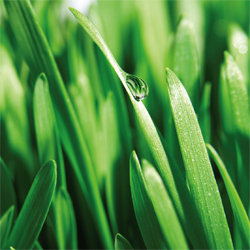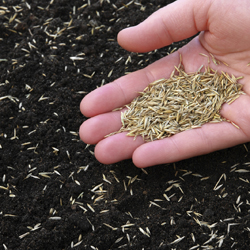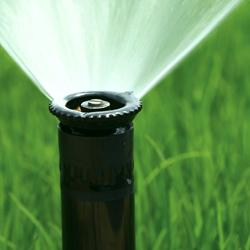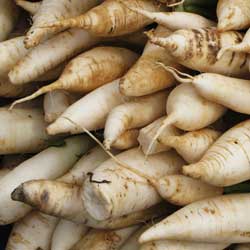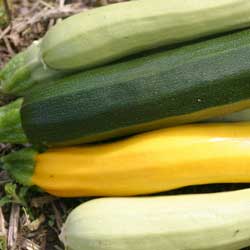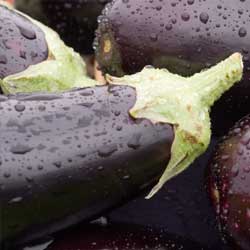General Soil Amendments
We’ve all heard of the importance of amending the soil properly for gardening and landscaping, but the number of soil amendments sold in garden centers often confuses gardeners. Which is which, and which will work best for your soil conditioning needs?
Types of Soil Amendments
Soil amendments fall into two basic categories: inorganic and organic. Inorganic amendments come from non-living materials such as sand, perlite, vermiculite, and crushed stone. With the exception of limestone and gypsum, which are used to increase soil calcium, these are not commonly used in the garden.
However, organic amendments are the opposite. They come from previously living materials such as peat, manures, and composts. When leaves, bark, peat, animals, and animal wastes are mixed together to decompose, compost or “humus” is the final product. Very commonly used, these materials enrich the soil by increasing the air space, adding extra nutrients to the soil, improving the absorption of those nutrients, and increasing overall soil fertility.
Why You Need Soil Amendments
Excellent soil is not common around most homes. Even if it was initially, house construction and roadwork often remove the good soil, and construction equipment compacts the remaining soil. Furthermore, heavy use of the remaining turf — children and pets playing, for example — continues to compact the soil. Chemical treatments, runoff from gutters and downspouts, removal of existing plants, changes in local wildlife— all of these factors can wreak havoc on soil.
Adding organics loosens compacted soil and results in better gardens. Incorporate organics into the beds throughout the year by working evergreen needles, leaves, and lawn clippings into the soil. Amendments such as peat or lime can improve a pH problem if one exists. Calcium and magnesium deficiencies can be corrected using organic materials such as bone meal or wood ashes or inorganic materials such as limestone, gypsum, or soft rock phosphate.
Mulching is another simple way to add biodegradable materials to the soil. Simply place mulch around the plant, leaving several inches bare closest to the stem to discourage insect invasions and rot. In addition to slowly providing nutrients as it decomposes, mulching is attractive, reduces weeds and erosion, maintains soil temperature, and prevents “crusting” that occurs when soil becomes too dry.
Another advantage of adding organics is the attraction of worms. They further assist in the decomposition, increase aeration, and leave worm castings, a valuable organic material, behind. A healthy garden is home to many worms, and it all starts with adding organic soil amendments.
Whether you opt for organic or inorganic soil amendments, if you use them properly, your soil will improve, and your landscaping, flowerbeds, and garden will look better than ever.



mulch, compost, tree bark, bark, gardening, blue, green, hands, holding, work, hands cupped, messy, dirt,
Love in a Houseplant: Heart-Shaped Houseplants
While roses are red and violets are blue, consider gifting your Valentine something different this year. What better way to say “long-term relationship” than with a heart-inspired houseplant? Let love blossom as your love does with these gorgeous, eye-catching, heart-shaped plants.Daniel’s Lawn & Garden Center has so many options for you to choose from, but let us help narrow your list. Here are some of our favorites:
- Sweetheart Hoyas
Gift this solitary, waxy, succulent heart to the one who has claimed yours. This houseplant is available in solid green or variegated. Extremely slow growing, Hoya will eventually grow into a vining plant if given the right conditions. - Anthurium
Perfect for Valentine’s Day! This tropical-looking houseplant, with heart-shaped spathes in shades of red and pink, favors bright, indirect sunlight and high humidity. Enjoy its long-lasting blooms for years to come! - Heartleaf Philodendron
This slow-growing, long-living, easy-care plant is perfect for the inexperienced houseplant lover. Heart-shaped leaves frame delicate, wavy stems. Whether hung from the ceiling or trained to climb, Heartleaf Philodendron are sure to earn a place in your Valentine’s heart! - Golden Pothos
Characterized by pointy, heart-shaped leaves of green, yellow, and white, the undemanding Golden Pothos is sure to charm your Valentine. Similar to the Heartleaf Philodendron, these houseplants are low-maintenance and can be trained to climb, crawling up to ten feet! - String of Hearts
Perfect for those forgetful plant parents, this delicate-looking plant is tough and thrives on neglect. The String of Hearts houseplant showcases beautiful, grey-green marbled, heart-shaped leaves tinged with pink. Tendrils of love will seek your affection with its tumbling vine display. This succulent will fit right into any esthetic. - Arrowhead Vine
Bring the tropics home with this luscious heart-shaped vine. Flaunting beautiful, variegated leaves, let this velvety-textured houseplant capture your loved one’s heart. Arrowhead Vines are low-light thriving plants, sure to add interest to any decor. - Mask Plant
Your Valentine will be saying “oo-la-la” with this stunning, uniquely textured houseplant. The waxy leaves contain the most impressive contrast between the dark leaf and its silvery-yellow veins. This tropical-vining houseplant confidently enchants any viewer who dares to gaze upon it. - Peperomia
This decorative houseplant flaunts intricately patterned leaves of green and cream. True to its succulent nature, the waxy, thick leaves are as hardy as your love! From alluring, ornamental foliage to air-purifying properties, Peperomia is a gift that just keeps on giving. - Philodendron Monstera
Create your own tropical paradise this Valentine’s Day with this large-leafed houseplant! Adding that “wow” factor to any room, its glossy heart-shaped leaves are found in vibrant shades of greens. Fawn over its impressively large leaves, tending as it continues to grow over time. - Cyclamen
Heart-shaped leaves weave an elegant pattern of greens, while petite, elegant flowers brighten up a room with dynamic reds, pinks, and whites. This houseplant is sure to bring a smile to your Valentine’s face. Not for the faint of heart, cyclamen can be forced to bloom again after dormancy.
Why stop there? Complete your Valentine’s Day gift with a decorative pot and the tools needed to care for a new houseplant. We have everything you need to set your sweetheart up for success.
Stop by Daniel’s Lawn & Garden Center and check out our incredible selection of houseplants, pots, supplies, and more! Our friendly and knowledgeable staff is here to help guide you on your journey to a victorious Valentine’s Day!



Winter Gardener’s Calendar
A perfect time to plan! Curl up with your gardening books and the gardening magazines and catalogs you’ve received in the mail. Get out the gardening journal and start dreaming…
General Landscape
- Clean up when you get a break in the weather. Remove fallen branches and downed evergreen clumps. Rake leaves to prevent stains on concrete and dead patches on lawn. If freezing weather is still in the forecast, leave the mulch in place.
- If your Christmas tree is still around, set it where the dropping needles will provide mulch, use the branches as additional insulation for perennials, or get together with neighbors to rent a chipper and create wood chips for larger mulch.
Houseplants
- Perk up tired houseplants by removing dead and dying leaves. Wash under a soft shower in the sink or tub.
- Spider mites love living in warm dry winter homes. Check for mites by looking for tiny speckles on leaves.
- Transplant if roots are growing through the drainage holes or over the pot edge. Pick up some new larger trend-setting colored pots to perk up your décor. Or, if you don’t want to move into a larger pot, untangle the roots and cut back by 1/3, scour the pots and replant with new soil.
- Remember to turn your plants each week as they begin to grow towards the weaker window light.
- Plant a terrarium or miniature garden. If you can’t play in the dirt outside, bring the fun indoors!
- Pick up Valentine flowers. We have a fragrant and beautiful assortment of red, pink or white flowers. Come in and choose from cyclamen, miniature roses, orchids, and other colorful flowers that are the perfect “I love you!”
Vegetables:
- Plant short-term cover crop such as Fava beans when soil becomes workable.
- February: Start vegetable and herb seeds indoors:
| Broccoli Cabbage Celery Chard |
Eggplant Kale Kohlrabi Leeks |
Lettuce Onions, bulb Peppers Radicchio |
Scallion Spinach Tomatoes Turnip |
General:
If you just need a breath of aromatic fresh garden air, stop by and smell ours! The humidity is perfect and will instantly transport you to spring. While here, check out the latest trends in gardening colors, containers, new plant varieties, and tools. Of course, we also have a wide selection of books to provide ideas. If you have any questions or need suggestions, we’re here to help. We’d love to see you!




Holiday Ornamentation and Décor From Nature
Holiday Ornamentation and Décor From Nature
Your garden and landscape is a gorgeous setting from its first blooms and buds in spring through its luxurious bounty of summer to a rainbow of gorgeous autumn foliage and harvesting. You can continue to enjoy that beauty through the winter when you plan for natural ornamentation long after the ground freezes and snow falls. Both inside and outside, there are many ways to enjoy natural holiday décor from your garden and landscape.
A Natural Holiday Landscape
Choosing landscaping plants that offer winter interest in their shapes, evergreen foliage, colorful bark, and long-lasting berries is an easy way to create natural winter beauty in your yard. A wide range of plants can offer unique winter features in different parts of your landscape, such as…
- Japanese Maple
This tree’s graceful, swooping branches make it a great specimen or focal plant, and it is available in different sizes to suit different landscape locations. - Winterberry
This shrub comes in a range of sizes, and its bright red berries stay colorful and intact through the winter, as they attract winter birds and wildlife. - Hollies
With its classically shaped foliage and glossy green hues, holly is a holiday favorite, and when it produces bright berries, it’s the perfect seasonal accent in the landscape. - Red Dogwood
This shrub really shines with its colorful bark, which is yellow at the base but becomes bright red on the stems, making a beautiful statement in a snowy landscape. - Walking Stick
The crazy curves, whorls, and twists of this tree-like shrub are eye-catching in any landscape, and look especially distinct when decorated with snow and ice. - Arborvitae
This classic evergreen shrub is available in different sizes and colors, ranging from a yellow-gold to lime to all shades of green, and it is versatile throughout the landscape. - Witch Hazel
The graceful winter flowers are an unexpected surprise from witch hazel, but provide an angelic elegance to the landscape long after other flowers have faded. - Viburnums
The winter berries of these shrubs range from white and pink to red, blue, purple, and black, and they are a favorite treat for hungry winter birds. - Mugo Pine
An ideal dwarf shrub for smaller yards or tight landscape spots, this evergreen is an excellent choice for suburban landscapes and provides shelter for winter wildlife.
These are just a few plants that can add amazing winter interest to the landscape. One of our exceptional nursery staff will be able to offer numerous additional options that will thrive in your yard, no matter what your soil condition, sunlight levels, or size constraints.
Using Natural Décor Indoors
The beauty of winter plants isn’t confined to outdoors when you get creative with your natural holiday décor. There are many wonderful projects you can create from the autumn and winter landscape, including…
-
- Boughs, Swags, and Bunches
Use pines, berry sprigs, interesting twigs, and other prunings to create natural decorations for mantles, doors, arches, shelves, and bannisters. Sharp pruners will create clean cuts for these accents, and use floral wire to discreetly shape each arrangement as you’d like, tying on burlap or ribbon bows for additional festive accents. - Wreaths
A natural wreath is a beautiful accent for any door, indoors and out. Use a wire form or grapevine wreath as a base, adding your own clippings and prunings to fill in the shape. Floral wire can help secure the arrangement, and a large burlap bow is a beautiful finish. For an even more unique wreath, consider creating one with succulents, herbs, or other unusual plants. - Ornaments
There are many ways to create natural ornaments for the holidays. Use clear glass or plastic ornaments and fill them with a pine or berry sprig, small pine cones, dried flowers or buds, or even nuts. Add in a bit of glitter for more festivity, and finish with a decorative bow. Other options include stacking graduated twig lengths into a Christmas tree shape or tying or gluing twigs into a star or snowflake for rustic ornaments. - Gift Tags
Use thick craft paper to create rustic gift tags. Tearing the edges of the tags will add more texture, and glue on a pine sprig or berry twig as a natural accent. A small accent ribbon can also add more color to the gift tag. - Pine Cone Crafts
If you have large pine cones in your yard, you can bring them indoors to create a variety of holiday crafts. Cones can be dipped into wax to create lovely fire starters, or use melted suet and birdseed to create a feeder for winter birds. Glue five narrow pine cones together to create a star shape, or use six to create a rustic snowflake, and add glitter to the edges for festive sparkle. Tie several cones together with floral wire to create a seasonal kissing ball, or arrange smaller cones into a tree shape to decorate with small pompons. - Garden “Gingerbread” House
Use cardboard shapes for the walls and roof, and adorn the house with pine sprigs, colorful leaves, berries, pebbles, and other natural accents for a decorative house that won’t threaten your waistline. Consider gravel, mulch, and other supplies from your garden center to add even more interest to the piece. - Accented Candles
Gently warm the surface of a large pillar candle and press natural accents into the soft wax to add decoration. Cedar and arborvitae sprigs are great choices, and could be left on the candle or peeled off to leave a clean, elegant impression. Any color candle can be used, or you can create arrangements with several candles in seasonal colors. - Wood Slice Decorations
Cut thin slices of larger pruned branches to create rustic decorations. Use sandpaper in different grits to smooth the cut surface, leaving the rough bark intact for interest. You can use wood-burning tools to create patterns, words, or personalization on each slice, then varnish the slices to seal them and create a glossy finish. - Branch Décor
Medium and large branches can become fun natural décor in your home. Use a spade bit to drill shallow impressions into a branch to hold tea light candles, or use a large, regular drill bit to create support for taper candles. You can wrap the branch with colorful holiday ribbon for even more festivity. - Walnut Characters and Scenes
Walnut shells of all sizes can be made into delicate and amazing decorations. Shell the nuts, then fill each half with miniature scenes, animal characters sculpted from modeling clay, or a classic nativity. Shells can also be painted to become ladybugs or bumblebees, or left natural and accented with a pompon nose, googly eyes, and felt antlers to become happy reindeer.
- Boughs, Swags, and Bunches
There are many fun, rustic, easy crafts that can bring natural décor and ornaments into your home for the holidays and help you appreciate and enjoy how beautiful nature is all year long.




Decorating for the Holidays
Decorating for the Holidays
Whether you prefer a single candle in each window or a 12-foot tree covered with glittering decorations, our ideas will help you create a special home, from the simple to the dramatic! Try some new and stunning decorations this holiday season, including:
- Garlands and Swags
Graceful drapes of greeneries and ribbons are the perfect choice for mantles, doorways, arches and railings. Weave two coordinating ribbons around a swag for a stunning contrast, or attach cones, berries or dried or silk flowers with a dab of hot glue for a colorful burst. You might also weave a bead strand into a garland or swag for extra glamour.
- Wreaths
Classic wreaths can be stunning on doors, over mantles, or in windows. They can be completed with a single bow or festooned with berries, trumpets, or other decorations to match your décor. Whimsical wreaths may be made of candy or faux cookies, or you might tuck small gift boxes or other accents into the design.
- Fresh Cut Greens
Pine boughs and holly sprigs look and smell great, whether they are scattered on the mantle, tucked behind pictures, or brimming from vases and baskets. Tie a bunch together with a big bow for a delightful, simple door decoration. When using in a vase, make a fresh cut at the base of greens before arranging and check the water often the first few days to keep them plump and fragrant.
- Roping
Simple ropes of pine, laurel, boxwood, and princess pine look great along a fence, railing, or light post. Add large, bold bows along the railing or fence with even larger bows at the base of the gateposts for an easy decoration and to bring the look together.
- Ornaments
Ornaments don’t just belong on trees anymore! Fill a tall, clear vase or glass pillar with colorful ornaments to display them elegantly, no tree required. For a more elegant look, use ornaments of just 1-2 colors, or ornaments only in coordinating shades and similar hues. You can also display ornaments in a broad open dish, around the base of a pillar candle, or worked into a wreath or swag.
- Treats
Your favorite holiday treats can also be elegant decorations. String candy canes along a garland or arrange them in a vase for a sweet decoration. A gingerbread house can be a beautiful centerpiece or fragrant gingerbread cookies can be attached to a garland or swag. You can even add a dish of bright peppermints as a candle base or ribbon candies to a wreath.
No matter your style, there are creative and unusual ways to add festive elegance to your home to celebrate the season.




How to Design Your Outdoor Living Area for Mixed Generations
How to Design Your Outdoor Living Area for Mixed Generations
Creating your perfect landscape can be a project that lasts a lifetime, but how can you effectively design your outdoor living area when your needs, activities, and preferences may change over the years? Fortunately, with a little careful consideration, you can create a functional and beautiful landscape that all generations of your family will enjoy.
Assess Your Landscape
When you’re planning outdoor spaces, it is critical to work with what already exists in your landscape. This means creating a landscape that flows with the contours of your property, is suitable for your overall space, and will thrive in your climate. Before planning extensive landscape work, consider…
- Soil quality and condition and any adjustments that may be required
- Irrigation needs, including sprinkler systems, runoff, and natural rainfall
- Sunlight levels and how light changes throughout the year
- General climate and microclimates throughout the yard
- Views from different angles, including those you may want to preserve or block
- Existing structures, pathways, and borders that may or may not be altered
- Potential trouble spots, such as narrow yards, steep slopes, or poor drainage
Â
By thoroughly understanding your landscape before you begin redesigning an outdoor space, you can effectively plan proper landscaping that will thrive rather than struggle.
Assess Your Needs
Once you know what you already have to work with in your landscape, you can assess what your needs are for an outdoor living space and how you can create a fun and enjoyable sanctuary in your yard. The needs of toddlers, teens, and adults can be very different, however, and it is important to note how preferences may change in the years to come. By thinking ahead, you can make full use of your landscape through different life and family stages without needing to redesign the yard every few years. Consider your family size and how it may change, including whether family members may move away or move closer, whether different family members may be interested in different outdoor activities and how changing schedules may affect how your landscape is used over time.
Planning Outdoor Spaces for Changing Needs
It may seem impossible to plan a beautiful landscape that will be just as enjoyable and useful a decade from now as it is today. Considering different aspects of your outdoor living space one by one, however, can help you develop a master landscape plan that your entire family, as well as friends, neighbors, and guests, will enjoy for years. When designing your outdoor living space, consider…
- Seating
There should not only be enough seating for the entire family to share, but also for entertaining. This might include casual kids’ parties, summer barbecues, or more formal events such as a graduation party or bridal shower. While you may not have a seat for every guest over the years, be sure there is space to add additional seating for special events if needed. - Storage
From garden tools and children’s toys to sports equipment, patio cushions, and outdoor holiday decorations, there is always a need for more storage related to your landscape. A shed is a good option, or integrate storage areas that will serve multiple purposes such as built-in storage benches or bins that are part of the patio or deck design. - Gardens
If you want a productive, delicious garden as part of your landscape, opt for adjustable gardening areas such as raised garden beds, container gardens, or vertical gardening spaces. These types of gardens are more easily adjusted over the years as your desire and needs for fresh produce change, as well as being more adjustable for garden care. - Activity Areas
Plan activity areas in your outdoor space that can be modified over the years to meet different needs and preferences. A play structure in an open area, for example, can be removed when young children outgrow it, and that same area can become a badminton court for the whole family. A fire pit area, yoga space, or meditation niche can also be adjusted through the years. - Pathways
Getting from one area to another in your yard should be easy for everyone to navigate. Broader pathways will be easier for unsteady youngsters as well as seniors with mobility assistance, and shallower steps are easier for feet of all ages. Be sure paths are level and even, and plants should not overgrow busy traffic areas. - Entertaining
If you enjoy entertaining in your yard, be sure to incorporate gathering spaces for groups to enjoy. This might include a fire pit with conversation seating, a grilling area with good access to tools and supplies, or even an outdoor kitchen for more elaborate parties. Proper lighting or a speaker system for music can also be essential for an outdoor entertaining space. - Lighting
You will want to see your outdoor living space and enjoy it even after the sun goes down. Pathway lighting, spotlights on focal points, and fun string lighting or outdoor chandeliers in entertaining areas can all be part of your lighting design to keep your outdoor space functional as well as festive after dark. - Privacy
Always consider privacy when designing your outdoor living space, not only from nearby streets or neighbors’ yards but also from different areas of your yard. Be sure there are good sightlines where necessary, but also consider cozier niches where individuals or smaller groups can feel more private. Plants, screens, lattices, or trellises are all good options for enhancing privacy. - Plants
Choosing plants for your landscape is easy when you consider not only your own future needs but the future needs of the plants as well. Note the mature sizes and growth patterns of plants when placing them in your landscape, and consider how much maintenance they may require over the years to be sure you can give them the care they require even as your life changes. - Focal Points
Focal points can unite your landscape and bring it together visually, even as your needs may change. An eye-catching specimen plant, for example, can become the backdrop for family events and photos, and these familiar sights will always be welcome to your family even as its composition changes.
No matter how your outdoor living space may need to change over the years as your family and its preferences change, you can plan a versatile, adaptable space to change with your family. What won’t change, however, is how much you can enjoy that space and how it will bring your family together for many memorable moments.
Need help planning the perfect landscape for your family’s diverse and changing needs? Our experts can help you craft outdoor living spaces you will enjoy for years!



Fourth of July Porch Pots
Fourth of July Porch Pots
A porch pot can be a beautiful accent to any entryway, and with a bit of patriotic flair, you can easily style a Fourth of July porch pot as a decorative highlight for all your summer festivities. By carefully designing the pot and the plants it showcases, it can burst into festive glory just in time for the holiday.
Beyond the Porch
A porch pot is traditionally an elegant container positioned at the main front entryway, but for summer porch pots, it’s fun to look beyond the porch for where to show off your festive container. Where will you be greeting guests and entertaining during the summer months? Any gathering spot can be made more seasonal with the right porch pot, so consider placing one or more pots:
- In the corners of a deck or patio
- Spaced along a bare section of fence
- On stairs leading up to a deck or porch
- Framing an outdoor kitchen or grill area
- Accenting a pool surround
- As an outdoor table centerpiece
Wherever your pots can be seen, they’re sure to add a patriotic bit of color to give a party-like atmosphere to your outdoor living spaces.
Picking the Pot
When choosing a container for a Fourth of July pot, first consider where the pot will be located and choose an appropriate size for that location. Be mindful that the pot will not block walkways or cause a trip hazard on stairs, and be sure it is sturdy enough to hold up the plants you want to showcase.
The pot style can vary, and choosing a pot with patriotic colors can add instant flair to your decorative arrangement. Red, white, or blue pots are always popular choices, or the pot could be painted with a patriotic theme such as stars and stripes. Spattering a white pot with red and blue is a more subtle but festive option, or larger polka dots could be a bold and colorful statement. To honor a military connection, consider a pot with a camouflage pattern, or choose a more demure, understated pot to let the plants be the true stars of the arrangement.
Top Fourth of July Flower Picks
You can add any type of flowers you’d like to a Fourth of July porch pot, but red, white, and blue blooms are always favorites. Fortunately, there are many flower choices that can work into this color palette, including:¦
- Red – Petunia, zinnia, verbena, cardinal flower, impatiens, geraniums, nasturtium
- White – Zinnia, dahlia, geranium, verbena, daisy, petunia, cleome, vinca, snapdragon, impatiens
- Blue – Agapanthus, clematis, scabiosa, verbena, wishbone flower, lobelia, salvia, ageratum
In addition to bloom colors, you can also consider flower shape and opt for star-shaped blooms such as lilies, pentas, or star jasmine. Tall, flowing grasses with arcing plumes are another elegant option that mimics the gracefulness of fireworks. The round balls of allium and the spikes of salvia are other interesting shapes popular in patriotic displays.
Whichever plants you choose for your pot, remember the thriller-filler-spiller rule of thumb to create a lush, eye-catching arrangement, and it will sure to be a stunning decoration.
Planting Your Pot
Ideally, a Fourth of July porch pot should be planted several weeks before the holiday or any summer event so the plants have a chance to settle and fill in the pot before the celebration. If you’ve chosen a larger pot, add a layer of rocks or a brick or two to the bottom of the pot so it is properly weighted and will be less likely to tip over if accidentally bumped. Choose h potting soil to give each plant the proper nourishment, and ideally choose plants that all have similar sunlight and watering needs so they will thrive together.
Summer Porch Pot Care
Once planted, you will need to give your Fourth of July porch pot the proper care so it continues to look its best. Positioning the pot on a moveable stand or casters will help you be sure it has adequate light even as shadows shift from week to week, and rotating the pot will ensure the plants grow evenly. Water the pot appropriately, bearing in mind that smaller pots will need more frequent watering, especially on hot summer days. Fertilizing should not be necessary if you’ve used h potting soil, but if needed, fertilize sparingly to avoid burning roots or causing uneven growth. As the plants get taller, stake them if necessary, and protect the pot from sudden summer storms so it is not tipped or flooded.
Decorative Accents for a Fourth of July Porch Pot
It’s easy to add a bit of holiday flair to the pot if you choose decorative stakes with a red, white, and blue theme. Miniature flags are a popular choice, or you can find metallic sprays or faux firework rockets that will add a fun touch to the arrangement. Pinwheels are another great option that add a bit of movement to the pot.
Tying a ribbon around the pot can also add a holiday touch. Choose red, white, or blue ribbons, or opt for a rustic theme with gingham or checked patterns. Gold ribbons can also be a meaningful way to honor military members and deployed troops.
Be creative and fun with decorative accents for your porch pot, and it will be an eye-catching, attractive arrangement and a focal point for all your summer holiday entertaining.





Perennial Power
Perennial Power
Perennials may not be the best showstoppers in a garden full of annuals, but they make great foundation plantings to serve as a reliable backdrop or trusty fillers, among other plants. There’s no reason you can’t select perennials that are just as beautiful as your favorite annuals; however, it’s just a matter of choosing the flowers that pack the most punch and using them appropriately.
Best Perennials to Choose
When choosing a perennial to fill an empty space in your garden, make sure to get the most bang from your buck by selecting one or several long-blooming perennials. These flowers will be worthwhile additions to your landscape for their ongoing staying power, giving you a reliable backdrop and structure to build from.
- Achillea (Yarrow)
- Alcea (Hollyhock)
- Anemone (Wind Flower)
- Asclepias tuberosa (Butterfly Weed)
- Campanula (clips series)
- Clematis (Jackmani)
- Coreopsis (Tickseed)
- Corydalis lutea (Yellow Bleeding Heart)
- Delosperma (Ice Plant)
- Dicentra exima (Bleeding Heart)
- Doronicum
- Echinacea (Coneflower)
- Gallardia (Blanket Flower)
- Gaura (Wand Flower)
- Geranium (Johnson Blue)
- Helenium (Helen’s Flower)
- Heliopsis (Sunflower)
- Hemerocallis (Stella D’Oro) (Daylily)
- Hemerocallis (Happy Returns) (Daylily)
- Kniphofia (Red Hot Poker)
- Lavender
- Liatris spicata (Gayfeather)
- Ligularia (Ragwort)
- Lobelia cardinalis (Cardinal Flower)
- Lythrum (Loosestrife)
- Malva (Mallow)
- Monarda (Bee Balm)
- Nepeta (Catnip or Catmint)
- Oneothra (Siskiyou) (Evening Primrose)
- Perovskia (Russian Sage)
- Rudbeckia (Coneflower)
- Salvia (most verticillata)
- Scabiosa (Pincushion Flower)
- Shasta Daisy (Becky) or (Snow Queen)
- Stokesia (Stoke’s Aster)
- Veronica (Speedwell)
Using Your Blooming Perennials
To make your perennials truly pop, it’s important to position them in your landscape, where they will show to their best advantage. Popular options include:
- Filling in between showstopping annuals with perennials that will grow and bloom to cover fading blooms after the annuals are finished.
- Adding blooming perennials in front of a hedge, fence, or privacy screen for extra coverage with a dash of color.
- Using perennial flowers as a backdrop for lower annual plantings along a house foundation or in other flowerbeds.
- Creating a naturalized lawn or meadow-like area full of different perennials for a low-maintenance option that still stuns.
- Planting perennials in hard-to-tend areas, such as alongside a water feature, in tight corners, or on terraces, so they can be gorgeous with less maintenance.
With so many options for lovely perennials that can be used in many different ways in the landscape, there’s no excuse not to enjoy these easy-care flowers for many years!





